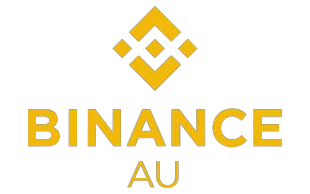The competitors
CoinSpot has been around since 2013 and has garnered a reputation as being one of Australia's leading cryptocurrency exchanges. It has over 2.5 million registered members at the time of writing, more than any other exchange based in Australia. The platform's simple user interface, wide range of coins and strong security history make it a frequent choice for newcomers to crypto.
Binance was launched in 2017 and quickly ascended to become the world's most popular cryptocurrency exchange in terms of trading volume and active userbase. Binance supports a plethora of coins and features including an NFT marketplace, earning opportunities and advanced trading options.
We've compared these 2 exchanges head-to-head in 5 categories including fees, coins and payment methods to help you choose which platform is best suited to your specific cryptocurrency needs.
If you like, you can jump straight to the verdict to see which exchange we think comes out on top.
General overview
 |  | |
| Finder Score | 4.0 ★★★★★ | 4.0 ★★★★★ |
| Trading fee | Maker: 0.0110 – 0.1000%Taker: 0.0230 – 0.1000% | 1.00% |
| Deposit method | Credit card, Cryptocurrency, Debit card | Bank transfer, Credit card, Cryptocurrency, Debit card |
| Withdrawal Fees | AUD: Not supported Cryptocurrency: Fees vary | AUD: None Cryptocurrency: Fees vary PayPal: 0.5% |
| 24/7 support? | Yes | Yes |
| App available? | Yes | Yes |
| Go to site | Go to site |
CoinSpot is an Australia-based exchange operating out of Melbourne. Binance is a registered entity in the Cayman Islands, although it has over 40 offices located around the world.
Both exchanges are registered with Australia's regulatory body, the Australian Transaction Reports and Analysis Centre (AUSTRAC). Because of this, both platforms are compliant with Australian anti-money laundering (AML), know your customer (KYC) and counter-terrorism financing (CTF) laws.
CoinSpot and Binance are equipped with a large range of features, including support for a multi-token cryptocurrency wallet.
Binance users can earn rewards on their crypto investments via staking. Both exchanges have NFT marketplaces.
Notably, Binance's success has allowed it to create a native blockchain to complement its exchange. Known as the Binance Smart Chain, this network has expanded Binance's capabilities to the decentralised finance (DeFi) world and allows its customers to participate in advanced crypto opportunities like yield farming and liquidity provision.
Round 1: Supported coins
 |  | |
| Number of tradeable crypto assets | 404 | 537 |
| Go to site | Go to site |
CoinSpot and Binance both have a large range of cryptocurrencies available to buy and trade. The number of supported coins is almost identical.
Due to this, neither platform has a particular advantage when comparing supported cryptocurrencies. Most investors will be able to find the asset they want to purchase on either exchange.
Round 2: Supported fiat currencies
CoinSpot is an Australian exchange, and only supports Australian deposits and withdrawals (in addition to cryptocurrency).
Binance is a global exchange and supports a wide range of fiat currencies although you can no longer transfer AUD via bank transfer or PayID. This has also caused Binance to remove their AUD-denominated markets. The only way to buy crypto directly using fiat with Binance is to use a credit or debit card, both of which attract a fee.
Most trading on Binance is done against US dollar stablecoins, BTC, BNB and ETH.
Round 3: Costs
 |  | |
| Minimum deposits | $50 | $1 |
| Deposit Fees | Cryptocurrency: None | Bank transfer and PayID: None Cash: 2.5% Card: 1.22% Cryptocurrency: None PayPal: 0.5% |
| Trading fee | Maker: 0.0110 – 0.1000%Taker: 0.0230 – 0.1000% | 1.00% |
| Withdrawal Fees | AUD: Not supported Cryptocurrency: Fees vary | AUD: None Cryptocurrency: Fees vary PayPal: 0.5% |
| Go to site | Go to site |
CoinSpot now has a very competitive fee structure, with a fee of 0.1% on market orders (depending on the cryptocurrency) and 1% on instant buys. On top of no withdrawal or deposit fees, CoinSpot is a good choice for Australians looking for value on their crypto purchases.
Binance is one of the most competitively priced exchanges available to Australians, with lower fees compared to most of its competitors. Binance's trading fee ranges from 0% to 0.1%, varying based on volume and whether you're a "maker" or a "taker".
In addition, CoinSpot has rather high spreads, especially in comparison to Binance. Spreads are the difference between the price of an asset at the time of purchase and the price it is sold to you. These spreads fluctuate frequently depending on the cryptocurrency, but CoinSpot customers have reported spreads of up to 4%.
Conversely, Binance's spreads have progressively tightened, averaging well under 1% per transaction.
However, if you'd prefer to use market orders, you'll pay a default 0.1% maker fee on both exchanges.
Round 4: Deposit methods
 |  | |
| Deposit methods | Credit card, Cryptocurrency, Debit card | Bank transfer, Credit card, Cryptocurrency, Debit card |
| Go to site | Go to site |
CoinSpot offers support for most major Australian deposit methods for fiat currency. Instant bank transfers through POLi and PayID can be used without a fee, alongside traditional bank transfers (which take a few days to deposit). CoinSpot even offers physical cash deposits, allowing Australian residents to add funds to their accounts at supported newsagents around the country.
Binance no longer accepts AUD bank deposits.
Both exchanges accept credit and debit card deposits, although this is where fees are highest.
Round 5: What our users are saying
Finder users have left over hundreds of reviews for both CoinSpot and Binance which are overwhelmingly positive for both.
CoinSpot scores an average of 4.3/5 while Binance gets 4.8/5.
CoinSpot reviews
A common theme among CoinSpot users is praise for how easy the platform is to use and its beginner-oriented features. Customer support is also well regarded.
As for criticisms, they tend to focus on issues with account verification and security measures that some users find inconvenient.
This is a great platform for beginners, very easy to use. The desktop site has many more features than the app. The app is still great. But with the desktop, you are able to set prices for buy and sell. If a coin reaches this price you've input you will receive a notification via email or text or both. Low fees.
I registered with CoinSpot when I didn't know much. There are better ones out there. They have an authentication process that takes a couple of days so it takes a little while if you want to get started urgently (not really possible with this exchange). However, I did have someone crack into my emails and try to steal my Bitcoin and CoinSpot was excellent in blocking them/passing on the details to me.
Binance reviews
Reviews of Binance praise the smartphone app in particular, which offers all the features of the desktop exchange in a compact format. Users also enjoy the wide range of coins available as well as the extra features like staking.
Binance users appear to critique it for two main reasons – poor customer service and an overwhelming user interface that is not well suited for beginners. Mind you, the Binance App offers a lite mode with a simplified interface which is tailored to beginner investors.
Winner: Binance
There's few things separating Binance and CoinSpot overall. Both exchanges have a broad range of supported cryptocurrencies, support AUD purchases in some format and a number of additional earning opportunities. Both exchanges have a relatively good security track record and are registered with AUSTRAC. Binance even has an insurance fund of over US$1 billion to cover loss of funds.
Where Binance really edges out CoinSpot is its low fees – which are some of the most competitive you can find on the exchange market. CoinSpot has a straightforward fee structure and now actually matches Binance on spot market fees, but has much higher spreads.
CoinSpot does have some advantages – its user interface is easier to navigate for novices, and Aussie residents may feel more comfortable registering with a local business. CoinSpot's other big advantage is that it supports free AUD bank deposits and withdrawals.
Binance only supports AUD card payments, which mean you'll need to pay a fee whenever you want to buy or sell crypto with AUD via Binance.
Overall, it's worth remembering that there's no such thing as a "best" exchange – only exchanges that are "best" for you. The platform you end up choosing will reflect your specific circumstances, and you may even end up using features from both.
Frequently asked questions
Sources
Ask a question
More guides on Finder
-
Webull Pay Australia review
Webull Pay Australia allows Aussies to buy, sell and manage a wide selection of cryptocurrencies, integrated within the broader Webull ecosystem.
-
Day1x review
Day1x is an Australian-based crypto exchange promising low flat fees and convenient payment options.
-
Bybit review
We reviewed Bybit, a global crypto exchange most known for its speciality in crypto derivatives.
-
Swyftx vs Binance
We compare features, fees and more to find out whether Swyftx or Binance is a better choice.
-
Crypto.com review
Learn more about the Crypto.com platform in our complete review.
-
Gemini review
Read the Gemini cryptocurrency exchange review to walk through its features and see how it works.
-
Sites like CoinSpot
You can buy hundreds of cryptocurrencies with AUD on these Australian exchanges.
-
CoinJar review
Learn how to get some of the lowest fees in Australia with the CoinJar exchange.
-
CEX.IO review
Read the CEX.IO cryptocurrency exchange review to see how it works and how much it costs.
-
Independent Reserve review
Read the full review of Independent Reserve if you’re thinking of cryptocurrency trading.

